Sezincote is a 4,500 acre estate which nestles in the gentle rolling Cotswolds. I drove down the long drive on a sunny day accompanied by my niece who has ridden over the land and knows this Heythrop Hunt country like the back of her hand. She had however, never visited in the summer and on a warm May day the park was looking overwhelmingly lush and lovely.
John Betjeman, in a poem refers to the “home of the oaks”, for Sezincote (pronounced Seezincote) is derived from Cheisnecote, from chêne, French for oak, and cot for dwelling.
Oaks of course are not the only trees to grace the park, there are several different species, mature and stately, many are from the original landscape planting,
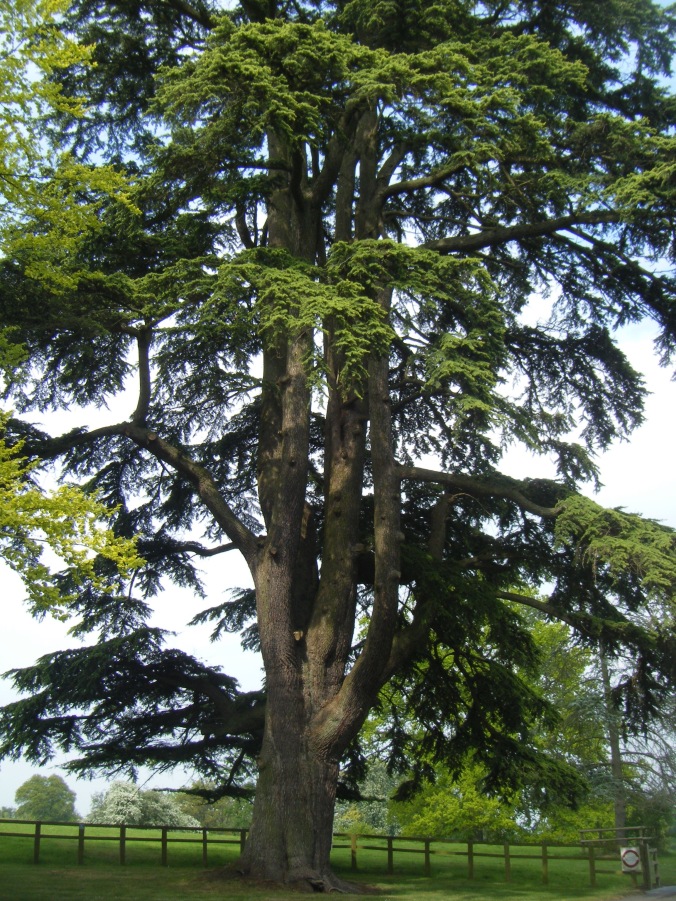
It is thought that Humphrey Repton worked here and he alludes to Sezincote in some of his correspondence, however there is some doubt because of the absence of his ‘red book’.
Before heading up towards the house we pause a moment on the Indian bridge to admire the Brahmin cows, then duck down to the left into the water garden known as ‘Lower Thornery’.

The house and gardens fell in to disrepair in the first half of the 20th century. In 1944 Sir Cyril and Lady Kleinwort bought the house and set about a restoration programme. The water had almost disappeared so they made the pools waterproof and re-established the flow of the stream. They also sought the expertise of the great horticulturalist of the day Graham Stuart Thomas who continued to advise for over 30 years.
We follow the gravel path which runs parallel to the stream. There is an interesting collection of trees and shrubs, many of which are Thomas’s recommendations.
A Tibetan tree peony paeonia lutea ‘Ludlowii’ is looking particularly splendid today.

There is plenty of space for the specimens to grow, and the fact that they are not crowded is to our benefit; Cornus controversa variegata the wedding cake tree can be enjoyed from all angles.

The Japanese maple Acer palmatum ‘Dissectum’ is a lovely shape with a fresh soft green this time of year.

It is the natural Spring colours of white and green found in cow parsley, hawthorn and Horse Chestnut growing in the surrounding park, that are echoed in the plants in this beautiful little valley. The magnificent flowering bracts of Cornus kousa,

the eye-catching spirea,

and a large clump of the softly scented maianthemum racemosum (smilacena racemosa) growing by the water’s edge.

Even the wisteria on the bridge is white.

By the path stands an aged tree, a weeping hornbeam carpinus betulus ‘Pendula’ which we discover is considered to be the largest in the country.

Walking back up the winding path from the lower pond we catch sight of the house across the field, magnificent with its weathered-copper onion-shaped dome. It was built by a colonel in the East India Company in a mixture of Hindu and Muslim architecture, and was completed in 1805.

Continuing on the path up the stream we admire the generous plantings of the hostas mirrored in the still pool.

The clear water flows at varying speeds and here it narrows and gently burbles over rocks.

Just before the Indian bridge is the snake pool, named after the three headed snake which slithers up the trunk on the small island.

Evocative of a Mogul garden we step over the stones in the cool of the shade under the bridge.
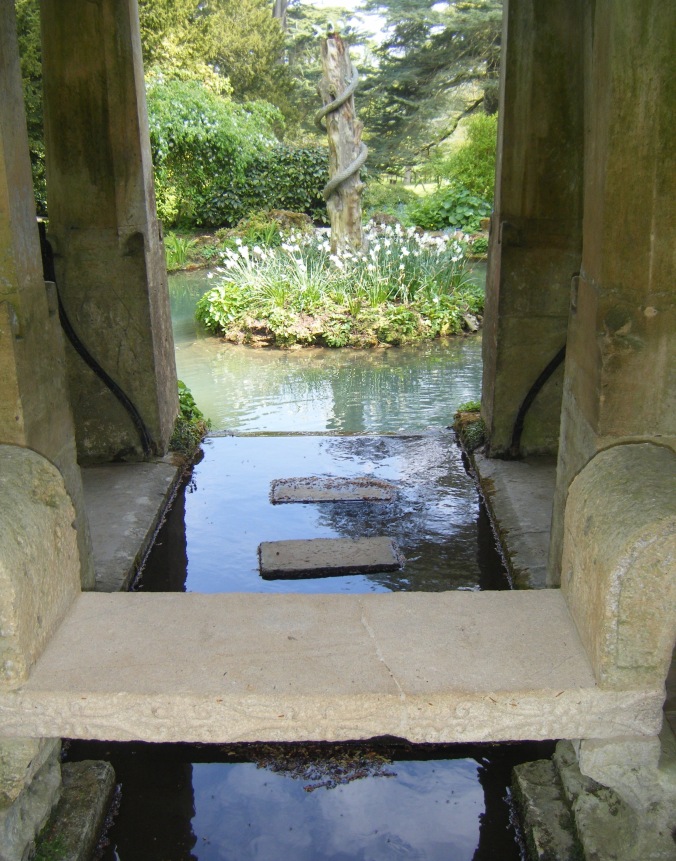
The water is almost still here and the planting lush and verdant, a mix of hosta, brunnera, ferns and Lysichiton.

Blue comfrey brings a little colour to the water’s edge.

as does the spikes of primula vialli.

We reach the top pool where in the centre is a fountain spurting water. Above is a little temple with a statue of Surya. The water looks grey against the pale clay, and the plants are silver and white, a typically restrained Thomas touch.
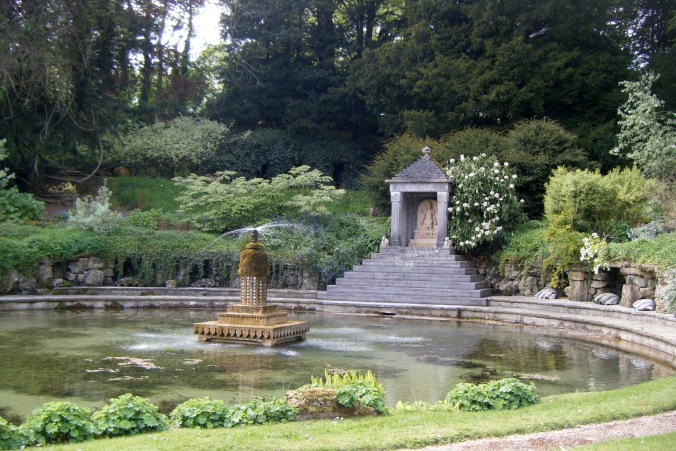
Brahmin bulls originally made from Coade stone, are seated on either side of the temple.

and crumbling grey stone shells decorate the base of the surrounding wall.

Leaving the Temple pool we step along the Deodar grove, passing the house to the grotto on the far side. Slightly reminiscent of a fireplace it is surrounded by evergreens and ferns,

and inside on the floor is a marble slab engraved with an intriguing pattern.
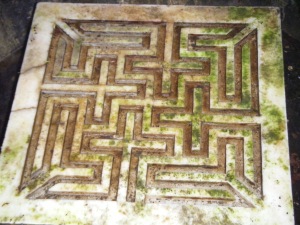
Close by and up the steps is an exotic temple, not an 18th century wonder but a tennis pavilion built in 1961.
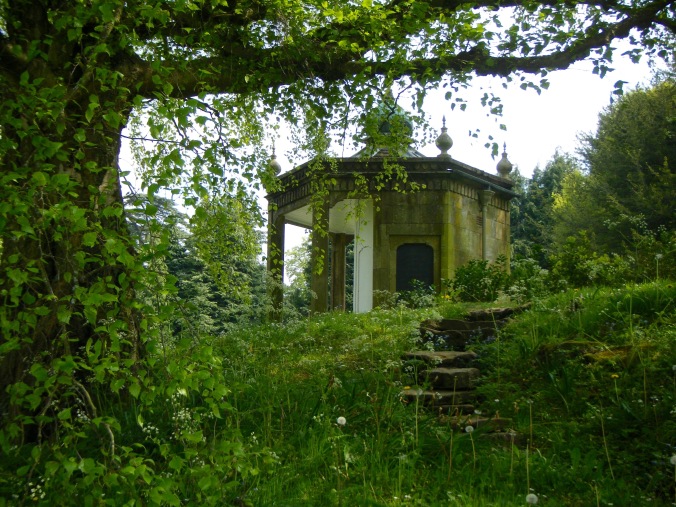
Before the war there would have been a team of 12 gardeners. The work force is much reduced now and we find the head gardener busy weeding. He is happy here and lives in a cottage set back near the old dairy overlooking the wildflower garden; it is in an enviable situation and away from the public.
From up high we view the house, the curving orangery and stately Persian garden.

As we descend the path the Spring colours are glorious and the architecture dazzling with minarets and peacock-tail windows.

Modelled on the Taj Mahal after a visit made by the Kleinworts, the design of the canal was created by Thomas who cleverly suggested the use of Irish yews rather than Italian Cypresses dominant of warmer countries.

Bright parrot tulips loudly adorn the steps to the Orangery.

And inside is a calming variety of tender shrubs and climbers. The beautiful window arches are adorned with the sweet smelling Trachelspermum asiaticum.

It is the perfect place to take tea.
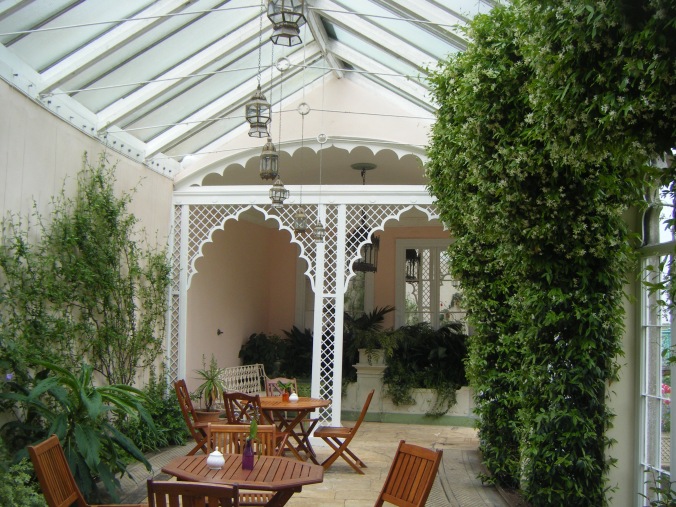
But we have no time today and so make our way back along the drive to the bridge, promising to return sometime to join a tour of the house.

Sezincote is a very curious and pleasing mixture of English Landscape and Mogul architecture. Unique, there is nothing quite like it and what better time to visit than when the garden gate is open for the National Garden Scheme on Sunday 25th June between 2-6pm.

——-39——-
Amazing… colonial power!
LikeLike
What wonderful photographs, and fabulous trees and planting. Definitely one for the ‘to visit’ list (like all the others you’ve been to!).
LikeLiked by 1 person
What an exotic fabulous place, love the Mogul influence, and would love a tour of the house!
LikeLike
Like a dream. You walk through an English country side and then pop over a bridge into India when you see the house. I would definitely go back to see the house.
LikeLike
Have heard of it but never visited. Your photos make me tempted to make the trip very soon.
Thanks Julia. I’m really enjoying reading your blog.
LikeLiked by 1 person
Sezincote is also beautiful in the autumn when the foliage around the stream looks particularly attractive!
LikeLiked by 1 person